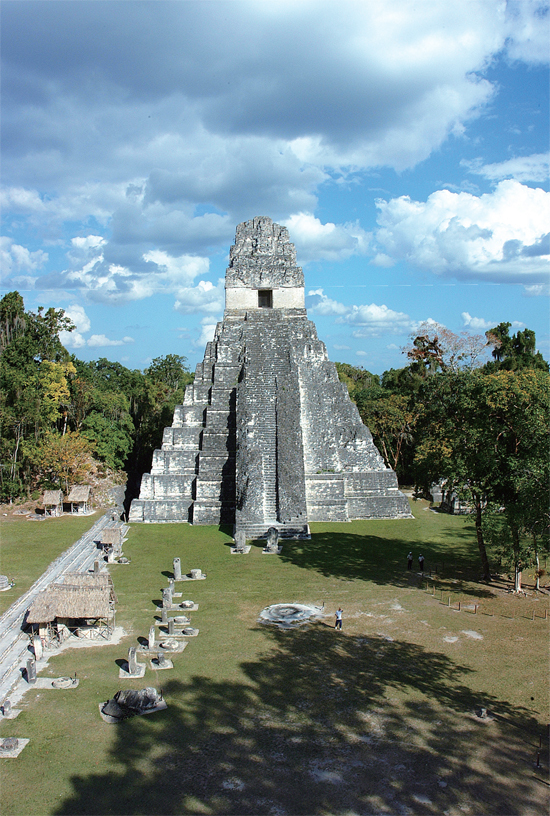
Korean ▶ [global news CheonJi] 찬란했던 마야문명, 왜 역사 속에서 사라졌을까
Maya Civilization Reached Improbable Heights and Fell to Ruins
The mysterious splendor of the Maya unfolded against the backdrop of the rainforests of Central America. Here, Maya civilization reached improbable heights about 1,300 years and fell to ruins.
The Ancient Mayans were highly advanced in astronomy. Besides having the concept of Zero, they are possibly the first culture to invent the telescope and map the stars and other phenomena in the night sky applying complex ideas of mathematics. With this information, they knew how to predict solar eclipses. They also used astrological cycles to aid in planting and harvesting and developed two calendars. Based upon their vigesimal numeric system they developed the two main calendars: a ceremonial calendar which is a 260-day calendar, and the vague calendar of 365 days which is more accurate than the Gregorian calendar developed 1,500 years later. Mayan calendar system had a cycle of 52 solar years. Mayan people interpreted the end of one cycle as the end of the world, and the would move and build new pyramids.
The heightened buzz in modern eschatology several years ago had its root in the Mayan calendar. According to Mayan’s calculations based on the long-count calendar, one baktun contains 144,000 days. They proclaimed their time to be in the 6th baktun of the Great Cycle and recorded their calendar only up to 21 December 2012 of the modern Gregorian Calendar. Based on findings, apocalyptics predicted the end of the world, but that ended up as a mere happening.
Religion was the center of Mayan culture and priests were extremely important in Mayan society. They carried the role of as mediums between common people and gods, and they were also expected to be well educated in astrology and astronomy, which might be one of the reasons for the development of Mayan astronomy.
The Maya universe consisted of three worlds; the underworld, the earth, and the world above sky. Mayans believed that each world was looked over by gods, and these layers were associated with the pyramid. For this reason you easily find the temple for gods everywhere in Tikal ruins in Guatemala and Chichen Itza in Mexico.
Mayan scriptures of divination describes the Popol Vuh, the creator who made mankind from maize flour by mixing it with his blood. In a way of showing appreciation and pleasing the gods, Mayans sacrificed human blood. Inscribed stones in Mayan temples bear witness to the practice of human sacrifice. Generally, only prisoners of high status or aristocrats were made human sacrifice. Before taken to the altar, the prisoners had to go through many rituals including fasting to be prepared fit for a sacrifice.
Mayans worshiped the sun, rain, the moon, Jaguars, snakes, maize and many other objects as gods. Featured serpent and Chac, the god of rain often appears in the temples of later Mayan cities. For example, a temple for Kukulkan in Chichen Itza has large snake-head sculptures engraved on the base of the staircase. In the spring and fall a play of light and shadow creates the appearance of a snake that gradually undulates down the stairway of the pyramid. This temple was dedicated to offering human sacrifices in the form of heart extraction, similar to Aztec priests tearing out the victims’ heart when they made human sacrifices to their god of sun.
Originating in the Yucat around 2600 B.C., Maya civilization rose to prominence around A.D. 500 - 600 in present day southern Mexico, Guatemala, Honduras, Belize and El Salvador covering almost 500,000㎢. It started to decline after the 7th century when Mayan moved further inland from Yucat because of deforestation and the Caribbean invasion. After the 10th century, one of the “Halach Uinic,” living god moved back to Yucat and the Maya were integrated into the Toltec society. Maya civilization did go through a brief renaissance, met its fall after the 13th century. Theories diverge on what caused the fall of Maya; the Mayapan or the Aztec advancing into Mayan land.
Most of the Mayan cities had fallen to ruin and were overtaken by Spanish conquistadors in the 16th century. After missionaries arrived from Spain, most of the sacred images and manuscripts were burned by the Spanish clergy. Years later, parts of Maya's mystery was unveiled when Mayan hieroglyphic were discovered carved on stone walls.
By Kang Soo-Kyung
ksk@newscj.com

